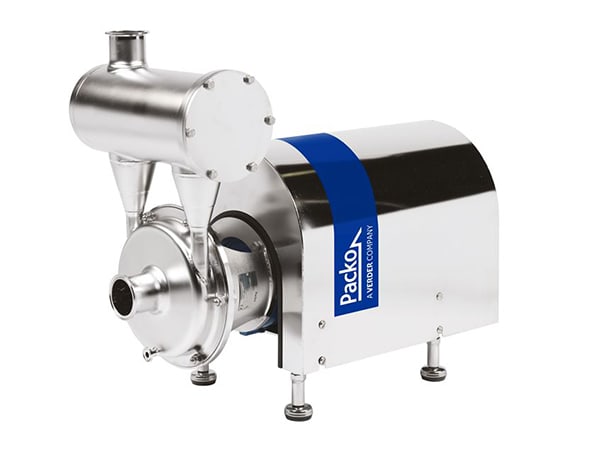Eddie Le Roux, Hygienic Pump Specialist for Verder Pumps South Africa
IN a world that is still adapting to post-COVID 19 consumer demands for farm-to-plate freshness, variety and convenience, there are two factors that continue to drive innovation in food technology: the need for safe and shelf-stable food.
These drivers are further fuelled by the need to achieve environmentally sustainable production facilities – and contribute to individual company, sector and national carbon reduction targets and net zero objectives while remaining profitable. To achieve all this, the food manufacturing industry must continue to seek out innovative solutions to industrial processing operations. The challenges of population growth, climate change, and shifting consumer demand puts technological innovations at the forefront of processing food in more prudent and sustainable ways. And there are three key innovations that are replacing heat and chemicals to keep food not only fresh but safe and are already shaping the future of food processing.
The first is high-pressure processing, which rapidly kills vegetative microbes and inactive viruses while denaturing enzymes that can cause food to spoil. This batch process applies high pressure of as much as 7 000 bar after packaging, minimising food treatment time and preserving nutrition and flavour.
Fermentation, though far from a new food preservation process, is another area in which innovative technologies improve sterility, preventing cross-contamination and ensuring scalability. The newest application of fermentation is the production of cultured (or cell-based) and mycelial protein products, which alleviate the pressure on large scale animal husbandry to produce enough animal protein to ensure food security. At the same time, alternative protein production technologies like this reduce the greenhouse gas emissions produced by animal protein production. Though not exactly mainstream yet, sterility is paramount in this kind of production facility, where clean in place (CIP) and sterilisation in place (SIP) are crucial.
The third innovation, aseptic processing and packaging, removes the need for refrigeration during transport and on store shelves for a variety of animal and plant-based products, liquid eggs, puddings, soups, vegetable purees, and bulk ingredients. The improvements in shelf stability are achieved by filling sterilised containers, in a sterile environment, with product that has been sterilised, usually by heating and then cooling before filling. This kills microbes in the food and prevents them from being reintroduced during packaging.
Pumping solutions are often overlooked as an opportunity for improved shelf stability, environmental improvements, cost reduction and production capacity improvement. But they are integral to every industrial processing facility. The right high-pressure – in the case of high-pressure processing – or hygienic pump solutions is also crucial to successfully implementing these innovations in food safety.
First and foremost, the pumping solution cleanability requirements must be designed to meet international and local hygiene standards – including clean in place (CIP) and sterilisation in place (SIP) – as these can present many challenges for processors. Aseptic processing, for example, requires well-coordinated operations, as well as highly sterile and controlled environments. This is where hygienic pumps with a modular design can be integrated, allowing for streamlined disassembly, cleanability and reassembly.
Cross-contamination – a particular risk in fermentation processing facilities – can be mitigated through careful selection of equipment to maintain the highest hygiene standards. Fit-for-purpose hygienic pumping solutions that have been designed and built to eliminate any risk of contaminants during production are necessary for producers who want to stay ahead of the advances in fermentation technology.
As the food and beverages industry continues to evolve to ensure that food is safe, shelf stable and tasty, manufacturers must ensure their processes are reliable, repeatable and error-free. Integrating the right equipment is critical to food safety and sustainable production. Because the technical aspects of selecting the right pumping solutions for specific applications can be complex, food and beverage processors should look to a trusted and reputable brand that can offer not only a wide range of pumping solutions but solutions that are long-lasting, cost-effective and efficient – because they are 100% fit-for-purpose for the application.















